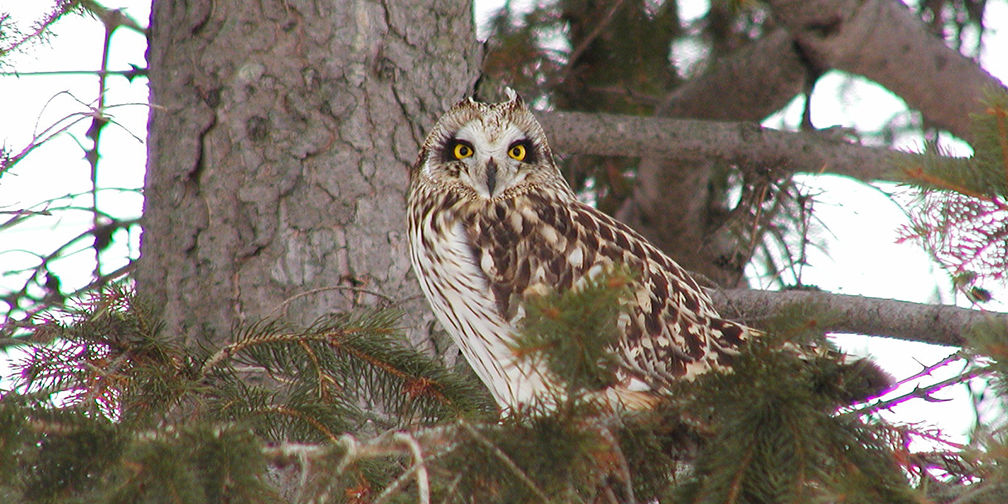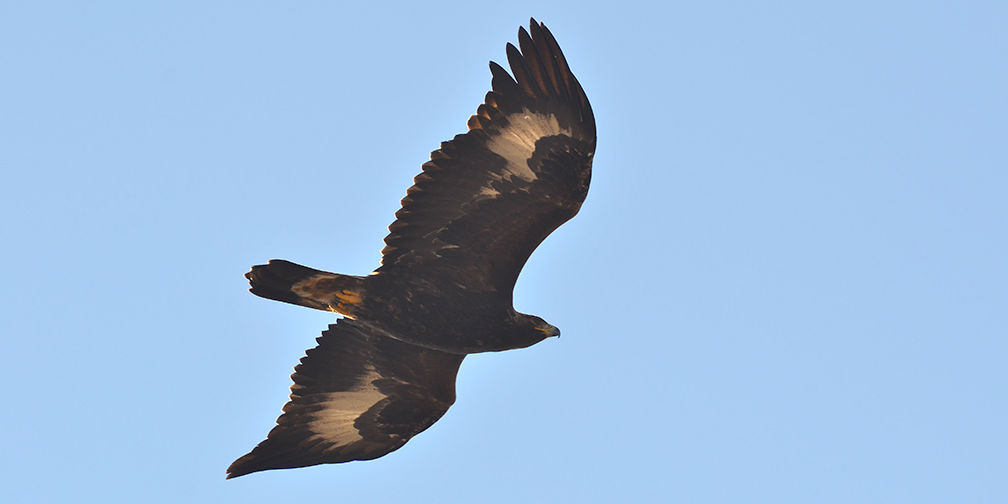Ontario Nature Blog
Receive email alerts about breaking conservation
and environmental news.
© Lora Denis
Prothonotary warbler © Mdf
Now that February is nearly over, I have excitedly started planning for spring migration.
Don’t get me wrong, I’ve loved winter birding, and this winter has felt particularly rich and rewarding on the life bird front. The ducks have never been more wondrous, I’m thinking of you, wood duck! And I’ve enjoyed seeing American coots, mergansers of every persuasion, long tail ducks and elegant buffleheads. The owl sightings have been plentiful and magical: in addition to the snowy owl bonanza, I came face to face with a short-eared owl, whose pointed glare reminded me of my high school Latin teacher. A few weeks ago, a juvenile golden eagle even graced us with its unexpected presence in the Cayuga area.

Earlier this winter, I found myself seduced by a male evening grosbeak’s feisty color scheme and later couldn’t take my eyes off the redpolls (both common and hoary), with their distinctive pinkish breast. The birds offer patches of color to counteract the endless winter grey drabness, reminders of springtime brilliance to come.
But I’ll be honest. I can’t wait for spring warblers. When I first started birding I thought I’d grow desensitized to seeing the same songbirds come through southern Ontario every year. The migrants’ arrival is fairly predictable, yet the vibrant colors, frenetic motion, fiercely goal-oriented behavior and stories of their perilous journey stun me every time. But what I truly love about warbler season is that every year I can measure my improvement as a birder: at the end of every spring migration, it seems I can reliably ID a few more birds.

I’ve started studying field guides. In addition to my faithful Sibley’s, I checked out Peterson and Kaufman guides from the library. I also discovered a great Ontario-specific field guide by Jeffrey Domm called Ontario Birds (www.amazon.ca/Lorimer-Field-Guide-Ontario-Birds/dp/1459400410 ). Domm’s book is a useful guide to the 225 usual suspects southern Ontario has to offer, including a great list of birding hotspots, flight characteristics, egg identification guides, an observation calendar, and various other identification tips. With one bird per page, my only wish is that Domm had added more pictures, including immature plumage and more female birds.
I’m also finally taking the plunge into bird song recognition. I downloaded Audubon’s bird app on my Ipad and recently acquired the Stokes Field Guide to Bird Songs (www.amazon.ca/Stokes-Field-Guide-Bird-Songs/dp/1607887835), which I listen to in the car (much to my husband’s horror). The bird-song route will be a life-long learning project, but it’s one I’m excited to begin.
I’m also contemplating participating in my first-ever birdathon, the Baillie Birdathon. And, of course, I’m dreaming of orchestrating a trip to Point Pelee (though I’ve had to promise my husband that I’ll keep the Stokes guide on mute).
As great as this winter has been, it’s fun to start dreaming of spring! What are some of your spring birding plans?

Proposed 413 Route, Old School Road with farm and escarpment view © Noah Cole
We did our first ever Ballie Birdathon last year and had a blast. We’re doing it again this year.
My Spring/Summer wish bird this year is to hear a Whip-poor-will.
Thanks for reading Angie! And thanks for birdathon encouragement! Good luck with the Whip-poor-will quest!